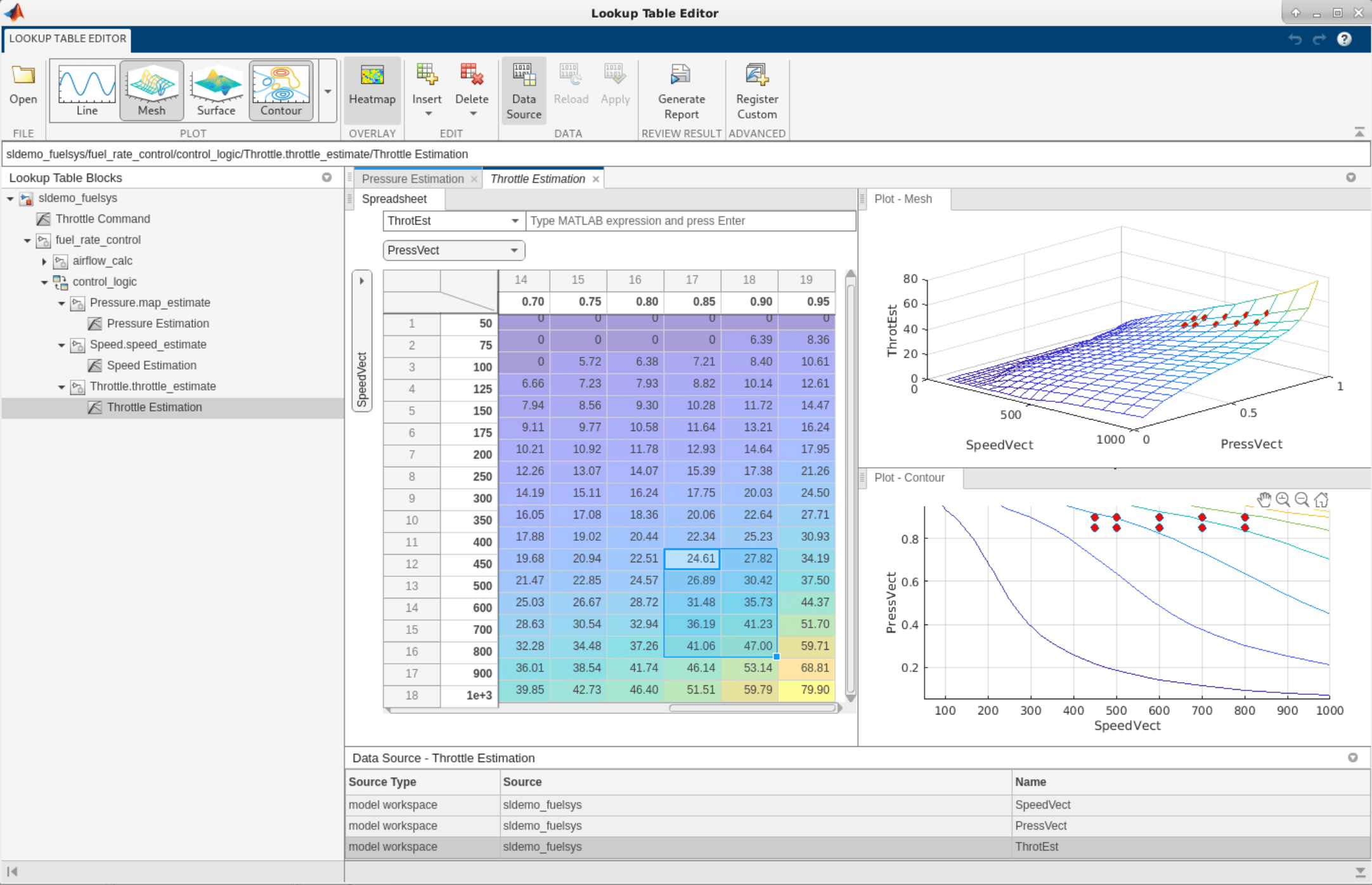What is a lookup table?
A lookup table is an array of data that maps input values to output values, resembling a mathematical function. A lookup operation retrieves the corresponding output values from the table if there are a given set of input values. In other words, a lookup table computes an approximation to some mathematical function y=f(x), given data vectors x and y. We can define the lookup table by specifying a vector of output values parameter as a 1-by-n vector. The lookup table block in Simulink generates an output based on the input values using one of the methods selected from the Look-up method parameter list. If the lookup table does not define the input values, the block estimates the output values based on a nearby table.
The methods listed are
- Interpolation: It is a process for estimating values between known data points.
- Extrapolation is a process for estimating values that lie beyond the range of known data points.
- Rounding: This is a process for approximating a value by altering its digits according to a known rule.
A Lookup Table (LUT) is a data structure used to map input values to output values, effectively serving as a precomputed set of results for a specific function or operation. This allows for efficient data retrieval and faster computations since the results are directly accessed rather than being computed on the fly. Lookup tables are widely used in various fields such as computer graphics, digital signal processing, and scientific computing.
Here are the primary functions and applications of lookup tables:
1. Speed Optimization
Computation Efficiency: By storing precomputed results, LUTs eliminate the need for repetitive calculations, thus speeding up processing times. This is especially useful for complex mathematical functions like trigonometric calculations, logarithms, and square roots.
Quick Data Retrieval: LUTs allow for O(1) time complexity for data retrieval, making them highly efficient for applications requiring fast access to specific data points.
2. Resource Optimization
Memory Usage: LUTs can trade off computational resources for memory, storing results of expensive computations to save time at the cost of additional memory usage.
Simplification of Algorithms: They simplify algorithms by replacing complex computations with simple table lookups, making the code easier to read and maintain.
3. Application-Specific Functions
Graphics and Image Processing: LUTs are used in color mapping, gamma correction, and other image enhancement techniques. They translate pixel values to display colors efficiently.
Digital Signal Processing (DSP): In DSP, LUTs are used for functions like filtering, modulation, and fast Fourier transforms (FFTs).
Data Compression and Encryption: LUTs facilitate quick encoding and decoding processes, and in cryptographic applications, they help with tasks like substitution in block ciphers.
4. Control Systems and Embedded Systems
Control Algorithms: LUTs are employed in control systems to quickly access control parameters based on input conditions, enhancing the real-time performance of the system.
Microcontrollers and FPGAs: In embedded systems, LUTs are used to implement various control and monitoring functions with minimal computational overhead.
5. Scientific Computing
Mathematical Functions: Complex mathematical functions can be approximated using LUTs, which is useful in simulations and scientific calculations.
Physical Simulations: In simulations involving physical phenomena, LUTs can store results of physical equations or models for rapid retrieval.
6. Machine Learning and AI
Feature Mapping: In some machine learning models, LUTs are used to map input features to corresponding weights or values for faster inference.
Precomputed Models: Certain models or parts of models can be precomputed and stored in LUTs for efficient real-time decision-making.


0 Comments